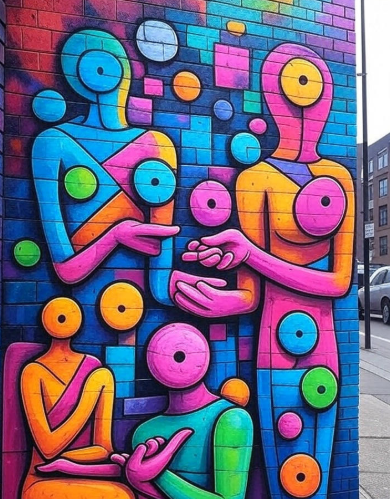Yesterday felt like one of those moments in tech history that we’ll look back on as a turning point. While most of us were scrolling through our feeds, OpenAI quietly dropped what might be the most significant AI update since ChatGPT first launched. Meet ChatGPT Agent an AI that doesn’t just chat anymore, it actually does things for you.
What Exactly Is ChatGPT Agent?
Imagine if ChatGPT suddenly grew digital hands and could navigate websites, fill out forms, book appointments, and complete complex tasks without you having to lift a finger. That’s essentially what OpenAI has built with their new agent mode.
ChatGPT Agent allows the AI to complete complex online tasks on your behalf, seamlessly switching between reasoning and action. It’s not just another chatbot upgrade – it’s a fundamental shift in how AI can interact with the digital world.
The most mind-blowing part? ChatGPT now thinks and acts, proactively choosing from a toolbox of agentic skills to complete tasks for you using its own computer. This isn’t some distant future promise – it’s rolling out to ChatGPT Plus, Pro, and Team users starting today.
The Evolution from Chat to Action
For years, we’ve been stuck in a question-and-answer loop with AI. You ask something, it gives you an answer, and then you have to go do the actual work yourself. It’s been helpful, sure, but also frustrating when you just want things done.
Operator is now fully integrated into ChatGPT as ChatGPT agent, which means OpenAI has essentially merged their experimental agent project directly into the main ChatGPT platform. This integration represents a massive leap from passive assistance to active execution.
The beauty of this system is in its simplicity. Just select “agent mode” from the dropdown menu in the composer during a conversation, and suddenly you’re not just chatting with an AI – you’re delegating real work to it.
What Can This Thing Actually Do?
The capabilities are honestly impressive, and a bit scary if you think about it too much. Here’s what ChatGPT Agent can handle:
Research and Analysis: It can conduct in-depth research across public websites, uploaded files, and connected third-party sources like email and document repositories. Need a comprehensive competitor analysis? It can dig through multiple sources and compile everything into a detailed report.
Calendar and Meeting Management: Users can issue commands like “look at my calendar and brief me on upcoming client meetings based on recent news”. It’s like having a personal assistant that never sleeps and always remembers everything.
Shopping and Planning: Want to try something new? You can say “plan and buy ingredients to make Japanese breakfast for four,” and it’ll research recipes, create shopping lists, and potentially even place orders.
Technical Tasks: It can execute code using Terminal, generate slides and spreadsheets, and connect to external data sources and applications. For anyone who’s ever spent hours formatting data or creating presentations, this is huge.
The agent operates through what OpenAI calls a “virtual computer inside your browser.” This allows the AI to perform real tasks on your behalf using a virtual computer inside your browser, which means it can interact with websites and applications just like a human would.
The Technical Magic Behind It
What makes this possible is OpenAI’s integration of multiple AI capabilities into one unified system. ChatGPT agent is a unified agentic system combining Operator’s action-taking remote browser, deep research’s web synthesis, and ChatGPT’s conversational strengths.
Think of it like having three different AI specialists working together:
- One that can control browsers and click buttons
- One that can research and synthesize information from across the web
- One that can communicate naturally with humans
The ChatGPT agent is in the same family as o3, which means it’s built on some of OpenAI’s most advanced reasoning technology. This isn’t just a simple automation tool – it’s an AI that can actually think through complex, multi-step problems.
Real-World Applications That Matter
Let’s get practical for a moment. Where would you actually use this?
Business Operations: Imagine telling your AI to “research our top three competitors, analyze their pricing strategies, and create a presentation for Monday’s meeting.” Instead of spending your weekend on this, you could have it done while you sleep.
Personal Planning: “Find me a good restaurant in downtown Chicago for Saturday night, check if they have availability for six people, and add it to my calendar.” The AI can handle the entire booking process.
Content Creation: “Research the latest trends in sustainable packaging, find five case studies of successful implementations, and draft a blog post outline.” Perfect for content creators who need to stay on top of industry developments.
Data Analysis: Upload your sales data and ask it to “identify trends, create visualizations, and suggest optimization strategies.” It can handle the technical work while you focus on decision-making.
The Limitations and Safety Considerations
Of course, it’s not all sunshine and autonomous AI assistants. OpenAI has been upfront about the limitations and risks.
OpenAI says bad actors could use the feature in ChatGPT agent to exfiltrate sensitive data through prompt injection attacks. This is a real concern – if an AI can browse the web and access your information, there’s potential for misuse.
The company has also been cautious about certain features. They’ve held back on some capabilities specifically because of security concerns, though they hint that these might be added in the future as safety measures improve.
There’s also the question of reliability. While ChatGPT agent sounds impressive, it remains to be seen how capable it truly is in real-world scenarios. Early demonstrations are always polished, but daily use might reveal limitations.
How This Fits Into the Bigger AI Picture
This launch isn’t happening in a vacuum. Agents are a buzzy concept in AI right now, but exactly what they can do in real-world settings without humans is just beginning to come into focus.
Google has been working on their own AI agents, Anthropic has been developing similar capabilities, and Microsoft has been integrating agent-like features into their products. OpenAI’s move feels like the starting gun for a new phase of AI development.
The timing is also interesting. During its first OpenAI DevDay event in San Francisco, CEO Sam Altman said “2025 is when agents will work,” and here we are, halfway through the year, with that prediction coming true.
What This Means for Regular Users
For most people, this represents a fundamental shift in how we’ll interact with technology. Instead of being operators of digital tools, we’re becoming directors of AI assistants.
The learning curve should be minimal. ChatGPT users are able to transition between conversations and action requests within the same chat, which means the interface feels familiar even as the capabilities expand dramatically.
The bigger question is whether this will change how we think about work and productivity. When AI can handle research, analysis, and execution, what becomes uniquely human? The answer probably lies in creativity, strategy, and the kind of nuanced decision-making that requires real-world experience.
Getting Started with ChatGPT Agent
If you’re a ChatGPT Plus, Pro, or Team user, you can try this out right now. Just select “agent mode” from the dropdown menu in the composer during a conversation and start with something simple.
Try asking it to research a topic you’re interested in and create a summary. Or have it analyze a document you upload. Start small and work your way up to more complex tasks as you get comfortable with what it can do.
The key is to think beyond traditional chatbot interactions. Instead of asking “How do I do X?” try saying “Please do X for me.” The shift in language reflects a shift in what’s possible.
The Future Is Here, Whether We’re Ready or Not
OpenAI’s ChatGPT Agent represents more than just a new feature – it’s a preview of a world where AI doesn’t just assist us, but actively works on our behalf. It’s part of a general push away from ask-and-answer digital assistants like Alexa and more toward Rosie from “The Jetsons.”
Whether this excites or worries you probably depends on your perspective. For productivity enthusiasts, it’s a dream come true. For those concerned about AI’s growing capabilities, it’s another step toward a future that feels increasingly unpredictable.
What’s certain is that this technology will evolve rapidly. The ChatGPT Agent we’re seeing today is just the beginning. As the safety measures improve and the capabilities expand, we’re likely to see AI agents become as common as smartphones are today.
The question isn’t whether AI agents will become part of our daily lives – it’s how quickly we’ll adapt to having digital assistants that can actually get things done. Based on OpenAI’s track record, that adaptation might happen faster than we think.
The future of AI isn’t just about smarter conversations anymore. It’s about AI that can take action, solve problems, and handle the digital busywork that fills our days. And as of yesterday, that future is available to anyone with a ChatGPT subscription and the willingness to let AI do the work for them.
Ready or not, the age of AI agents has officially begun.



